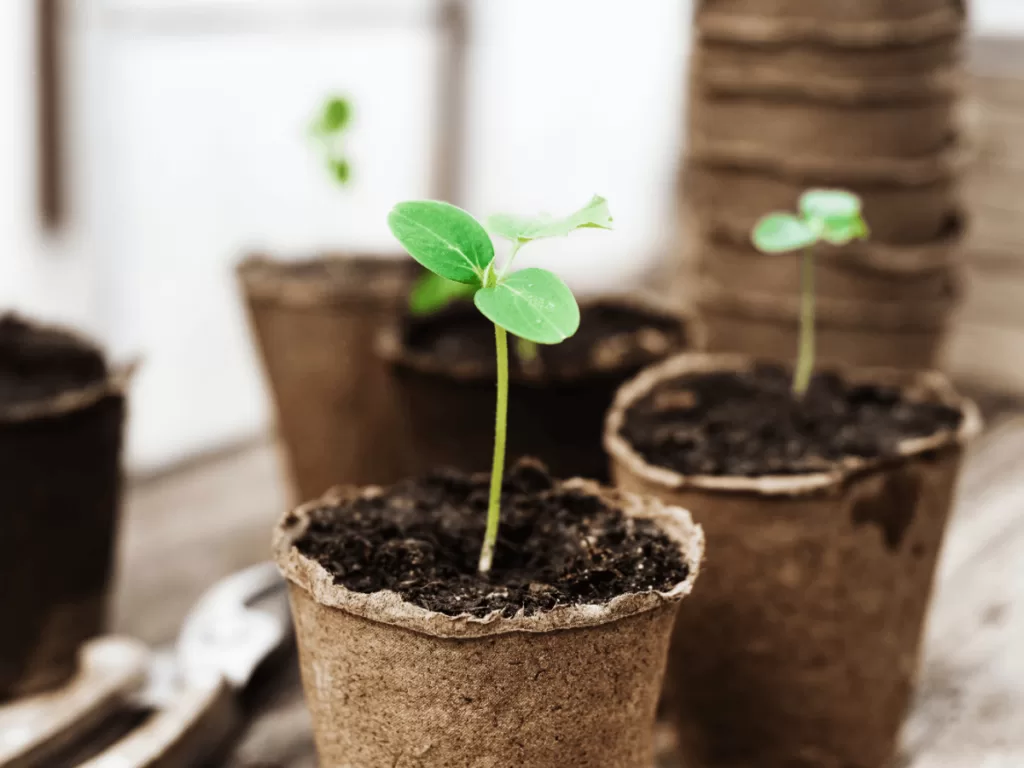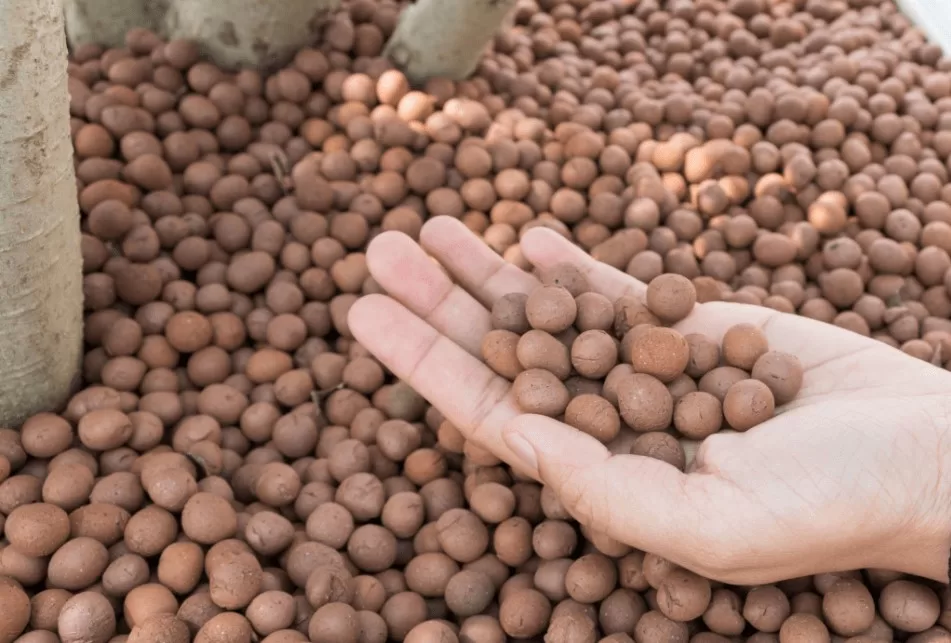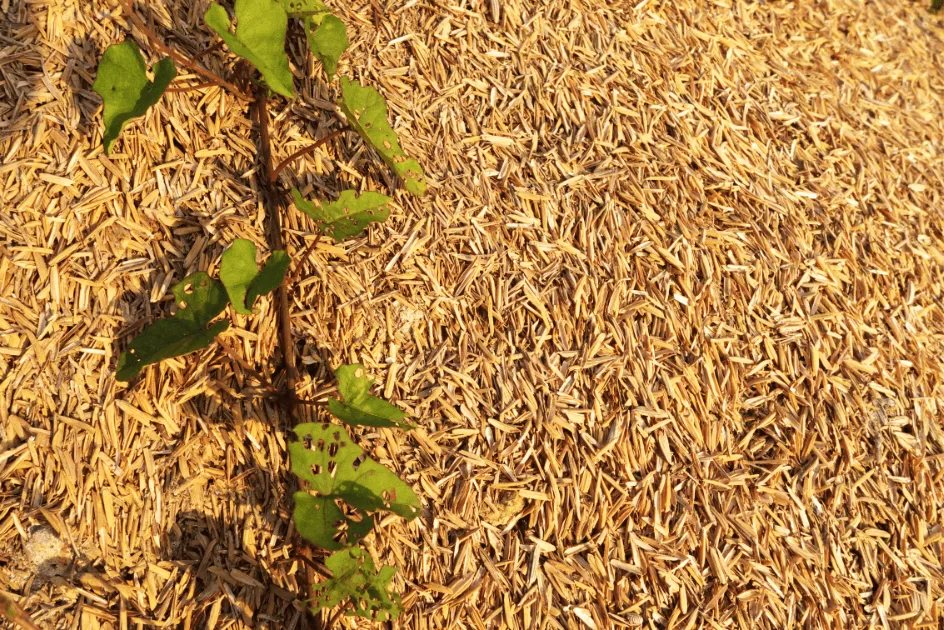Generally, hydroponics tools are pretty expensive but with a little research and direction, you can save plenty of bucks by getting cheap yet better alternatives to costly items.
Here, we will share affordable alternatives to rockwool to help you germinate your hydroponic seeds without being heavy on your pocket.
Though you can simply buy the seedlings from the market, but not everyone has enough spare money to put into hobbies or plants.
If you find yourself in such a position, then worry not because it is not going to affect the hydroponic growing experience at all. It might even make it better, as growing a plant right from the seed is an experience in itself.
Now let’s cut to the chase and talk about the important stuff. Here are 7 cheap alternatives to rockwool.
Table of Contents
7 Affordable Alternatives To Rockwool
Rockwool is an excellent material to grow seeds for hydroponics. Then why not simply use this instead of looking for alternatives? Rockwool is made by processing basalt rock extracted from the earth.
It is due to this extraction and processing that raises the prices of the rockwool. Luckily, there are plenty of alternatives to rockwool which are arguably better than it in different aspects.
Coco Coir
Coco coir is basically the hair fibers of the coconut shell. As you must have seen on unpeeled coconut, it has a stiff, hairy-like surface. Those hairy fibers have high water-holding capacity.
Due to their rough texture and high empty spaces, they can hold large amounts of water as compared to their own volume.

Despite looking like they are made of wood, they actually contain major nutrients like potassium and phosphate.
Though they are in unabsorbable form, but when used as growing media for plants, can be broken down by plant enzymes.
With plenty of air spaces, high water holding potential, and nutrient contents, they prove as excellent yet one of the cheapest hydroponic seed starters.
Coco peat
There are some seedlings whose roots do not even have enough strength to grasp a material if it has too many empty spaces, like coco coir. So, is there a similar alternative for coco coir too?
Well, yes, but actually no because the alternative is coconut hair fibers itself, but this time in ground form.

Coco peat is just crushed and ground coconuts husk that is turned into a powder-like texture. On one hand, it retains all the good qualities of the hair fibers, and on the other hand eliminates the only problem that seeds faced with coco coir, too many air spaces.
However, with processing comes cost. Though they are just slightly costly, still are more expensive than coco coir.
Sand
Yes, just sand. Sand fulfills all the factors like WHC, neutral pH, and airspace. Sand also lacks any nutrients of any sort.
This saves us the cost of treating it with chemicals first to be suitable for certain plants. All these qualities make it an ideal seed starter media.

Sand is also a significant proportion of the organic soil you find on the land. This is enough to prove its role in sustaining a germinating seed.
When it comes to cost, how costly can it be, I mean it’s just sand. If you happen to be around a desert or any dry area, you can just have it for free. But if not, then you can buy plenty with just the spare lying around in your car’s hood.
Brick Shards
In brick kilns During the production of bricks, there’s a lot of throwing and tossing around, making a lot of waste in the form of brick shards or brick powder. Moreover, the material from all the buildings and houses demolished goes to landfills as waste.
The brick shards, when crushed into a usable size, can work as an affordable alternative to rockwool for germinating hydroponic seeds.

However, not all types of plant seeds will not work in this growing media. This is because bricks are made by treating clay with different chemicals and compounds. These compounds change the neutrality of water when it comes in contact with the bridge.
But if you can get your hands on it, then mixing it with other media to germinate the seeds is not a bad idea, especially if you are just a beginner and testing things out.
Sawdust
If you have visited any lumbar processing plant or sawmill, then you’ve probably seen sawdust as well.
Each year, the USA alone produces 3 million tons of sawdust as a byproduct from the lumber industry. Unlike the byproduct of most other industries, it has no productive commercial use and mostly ends up as waste.
However, people have noticed the usefulness of sawdust as a growing medium for hydroponic seeds.

The size of the dust in it is very variable depending upon the type of wood cutting. However, the minute the size of the particles, the better it is for germinating seeds.
Since it is of no use, you can get it for free. Yotam Ottolenghi’s saying, “One man’s trash is another man’s treasure, and the by-product from one food can be perfect for making another” fits here perfectly.
However, one drawback is that they lose their texture and shape after a few rounds of watering. Meaning that they can germinate seeds only once or twice, but that would only be a problem if you are paying for something, not when it’s free.
Grow Stones
Grow stones are made from heated clay until they get into a form that is sturdy yet water-absorbing.
Just as we know, clay is one of the purest forms of soil, so it’s not free. Then why mention it here? Because this is a one-time expense, and you can grow indefinite generations of seeds if used properly.

Rice Hulls
Rice hulls are the byproduct of the rice milling industry. Each year, more than 30 million tonnes of rice hulls are produced in the USA, most of which are discarded as a waste product.

Being a product of organic origin, 29% of their contents are nitrogen extracts. This nitrogen can be accessed by the growing plant if hulls are used as a growing media.
Since they are waste products, all you will pay to buy them is the processing and delivery free to any vendor who sells them. Though they are cheap, all their properties are parallel to the rockwool which is comparatively a very expensive seed starter for hydroponic plants.
Conclusion
After knowing how to germinate seeds for hydroponics without rockwool, and the 7 affordable alternatives to it too, the budget issue is resolved. Now all you need to do is find these seed starters in a hydroponic store in your area, or you can just have them delivered to you at your home. Either way, germinating hydroponic seeds demands care and attention, which you will have to give yourself, all we can do is guide.

1 thought on “Starting Seeds on a Budget: 7 Affordable Alternatives to Rockwool”